-
 Bitcoin
Bitcoin $107,247.2038
-0.18% -
 Ethereum
Ethereum $2,424.7947
0.34% -
 Tether USDt
Tether USDt $1.0003
-0.02% -
 XRP
XRP $2.1171
-3.33% -
 BNB
BNB $645.6618
0.06% -
 Solana
Solana $141.5898
-1.32% -
 USDC
USDC $0.9998
0.00% -
 TRON
TRON $0.2710
-0.41% -
 Dogecoin
Dogecoin $0.1602
-2.99% -
 Cardano
Cardano $0.5553
-2.28% -
 Hyperliquid
Hyperliquid $36.3019
-2.42% -
 Bitcoin Cash
Bitcoin Cash $491.7212
2.04% -
 Chainlink
Chainlink $13.0810
-0.23% -
 Sui
Sui $2.6080
-5.06% -
 UNUS SED LEO
UNUS SED LEO $9.0040
-0.05% -
 Stellar
Stellar $0.2350
-3.06% -
 Avalanche
Avalanche $17.2294
-2.31% -
 Toncoin
Toncoin $2.8075
-1.05% -
 Shiba Inu
Shiba Inu $0.0...01121
-3.43% -
 Litecoin
Litecoin $84.2215
-0.32% -
 Hedera
Hedera $0.1429
-4.88% -
 Monero
Monero $312.2199
-0.90% -
 Dai
Dai $0.9997
-0.01% -
 Ethena USDe
Ethena USDe $0.9999
-0.02% -
 Polkadot
Polkadot $3.2973
-2.60% -
 Bitget Token
Bitget Token $4.4742
3.12% -
 Pi
Pi $0.5631
-10.10% -
 Uniswap
Uniswap $6.7817
-2.06% -
 Pepe
Pepe $0.0...09252
-3.74% -
 Aave
Aave $251.3830
-2.24%
Is it effective to step back and not break after breaking the previous high?
A cryptocurrency stepping back without re-breaking its high may signal profit-taking or hesitation, but the trend can still resume with proper confirmation.
Jun 27, 2025 at 05:01 am
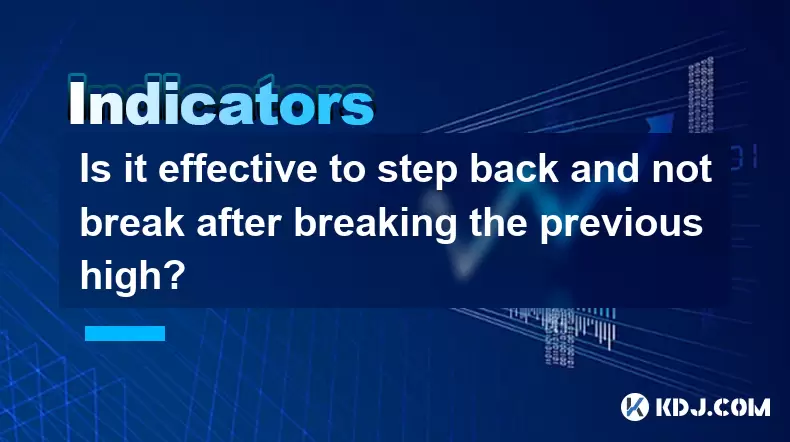
Understanding the Concept of Breaking Previous Highs
In cryptocurrency trading, breaking a previous high refers to when an asset's price surpasses its last recorded peak. This is often seen as a sign of strong momentum and bullish sentiment. Traders closely monitor these levels because they can indicate potential trend continuation or reversal points. When a coin breaks its previous high, it often triggers automated buying from algorithms and emotional participation from retail traders.
However, the scenario where the price steps back without breaking after hitting a new high raises questions about market strength and trader behavior. Understanding this pattern requires analyzing how support and resistance levels interact with price action in volatile markets like crypto.
Key Takeaway: Breaking a prior high is typically viewed as a positive development, but the subsequent price reaction determines whether that breakout has real conviction.
What Happens After a Breakout?
After a cryptocurrency asset breaks a previous high, there are several possible outcomes:
- Immediate continuation: Price keeps rising without retracing.
- Pullback or consolidation: Price steps back to test the broken high as new support.
- False breakout: Price spikes above the high briefly but reverses sharply.
The focus here is on the second scenario — when the price steps back but does not break the previous high again. This behavior may signal uncertainty among traders or profit-taking after a rapid move upward.
Important Note: A pullback doesn’t necessarily invalidate the bullish case; rather, it tests the strength of the breakout level.
Why Would Price Step Back Without Re-Breaking the High?
There are multiple reasons why price might step back without re-breaking a recent high:
- Profit-taking by early buyers: Traders who entered near the prior low may take profits at or just below the fresh high.
- Market hesitation: Institutional traders or large players may pause to assess order flow before pushing price higher.
- Lack of volume: If the breakout lacked sufficient volume, it may not attract enough confidence to sustain the rally.
- Technical rejection: Some coins face resistance even after a nominal breakout due to overhead supply or options expiry levels.
This kind of behavior is common in altcoins during broader market rallies, especially if Bitcoin or Ethereum show signs of weakness.
Insightful Detail: The psychological impact of a failed re-break can affect short-term sentiment more than technical indicators suggest.
How to Interpret This Pattern in Crypto Charts
Interpreting this pattern involves combining candlestick analysis, volume readings, and order book depth:
- Candle wicks: Long upper shadows suggest rejection at resistance levels.
- Volume trends: Lower volume during the pullback indicates less selling pressure.
- Order book liquidity: A thick bid wall below the current price can prevent deeper corrections.
Traders often use tools like Binance or TradingView to overlay previous highs and track how price reacts around those levels. Watching for rejection patterns such as shooting stars or bearish engulfings can help identify whether the pullback is temporary or a reversal in progress.
Critical Point: Volume and candle structure are key in distinguishing between healthy consolidation and weakening momentum.
Strategies for Trading This Scenario
When you observe a cryptocurrency stepping back without re-breaking the previous high, consider these strategies:
- Wait for re-entry signals: Look for bullish candlestick formations like hammer or morning star patterns before entering long positions.
- Watch for volume surges: A sudden increase in volume could indicate renewed interest and a potential resumption of the uptrend.
- Use Fibonacci retracements: Identify key support zones based on prior swings to set stop-loss levels and target areas.
- Monitor broader market conditions: If Bitcoin or Ethereum are showing strength, the pullback in an altcoin might be shallow and brief.
Avoid chasing entries immediately after a breakout. Instead, wait for confirmation that the pullback has ended and that price is once again moving toward the prior high.
Practical Tip: Combine time-tested technical indicators like RSI and MACD with price action to filter out false signals.
Frequently Asked Questions (FAQ)
Q1: Can a pullback without re-breaking still lead to a strong uptrend?
Yes, many strong uptrends include minor pullbacks that don't exceed the previous high. As long as the pullback finds support and volume remains consistent, the trend can resume.
Q2: How do I differentiate between a healthy pullback and a trend reversal?
Look at volume, candlestick patterns, and support/resistance levels. Healthy pullbacks usually have declining volume and respect key support zones, while reversals often feature sharp declines and bearish candlesticks.
Q3: Should I place a buy order during a pullback or wait for a new high?
It depends on your risk tolerance. Buying during a pullback offers better entry prices, but waiting for a confirmed new high reduces the chance of entering prematurely.
Q4: Are certain cryptocurrencies more prone to fake breakouts?
Smaller-cap altcoins with lower liquidity are more susceptible to fake breakouts due to manipulation and thin order books. Blue-chip tokens like ETH and SOL tend to have more reliable price action.
Disclaimer:info@kdj.com
The information provided is not trading advice. kdj.com does not assume any responsibility for any investments made based on the information provided in this article. Cryptocurrencies are highly volatile and it is highly recommended that you invest with caution after thorough research!
If you believe that the content used on this website infringes your copyright, please contact us immediately (info@kdj.com) and we will delete it promptly.
- Memetic Provenance, Crypto, and Undervalued Primitives: Why Culture Matters
- 2025-06-27 09:30:12
- MAGACOIN, Ethereum, and Dogecoin: Navigating the Crypto Landscape in 2025
- 2025-06-27 08:50:12
- Shiba Inu, Portfolio, and Cryptocurrency: Navigating the Meme Coin Mania in 2025
- 2025-06-27 08:30:12
- Crypto Price Predictions: Decoding Pi Network and the Block3 Buzz
- 2025-06-27 09:10:12
- Bitcoin ETFs, Supply, and Holdings: A New Era of Institutional Dominance
- 2025-06-27 09:30:12
- Quantum Threat, Bitcoin Encryption, Experts Warn: Is Your BTC Safe?
- 2025-06-27 08:50:12
Related knowledge
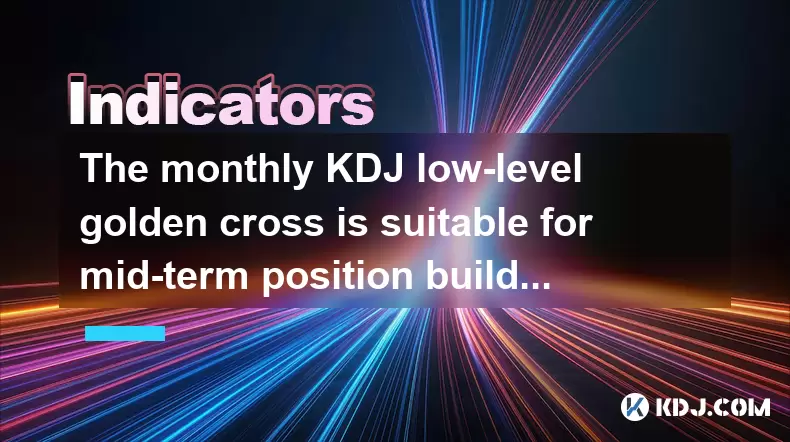
The monthly KDJ low-level golden cross is suitable for mid-term position building?
Jun 27,2025 at 03:14am
Understanding the Monthly KDJ IndicatorThe KDJ indicator, also known as the stochastic oscillator, is a momentum tool widely used in technical analysis within the cryptocurrency market. It consists of three lines: the K line, the D line, and the J line. These lines help traders identify overbought or oversold conditions, potential trend reversals, and e...
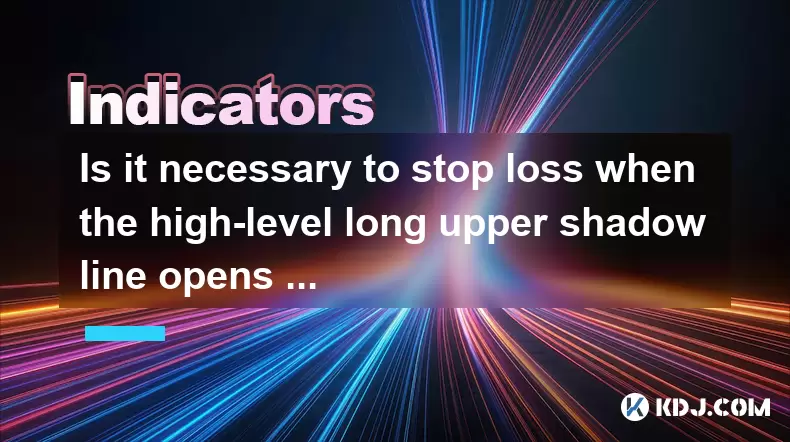
Is it necessary to stop loss when the high-level long upper shadow line opens low the next day?
Jun 27,2025 at 08:22am
Understanding the High-Level Long Upper Shadow LineIn technical analysis, a long upper shadow line refers to a candlestick pattern where the price moves significantly higher during the session but closes much lower, forming a long wick on the top. When this occurs at a high level, it suggests strong resistance and potential reversal. This type of candle...

How sustainable is the rebound of the lower track of the Bollinger band?
Jun 27,2025 at 10:01am
Understanding the Bollinger Band and Its Lower TrackThe Bollinger Band is a widely used technical analysis tool in cryptocurrency trading, composed of a moving average (usually 20 periods) and two standard deviation lines plotted above and below it. The lower track, or lower Bollinger Band, represents a level that is typically two standard deviations be...
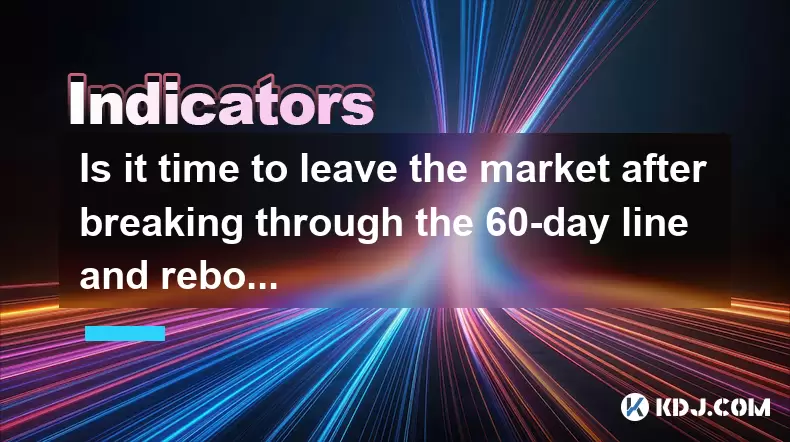
Is it time to leave the market after breaking through the 60-day line and rebounding?
Jun 27,2025 at 06:29am
Understanding the 60-Day Moving Average in CryptocurrencyIn cryptocurrency trading, technical indicators play a pivotal role in decision-making. Among these, the 60-day moving average is widely used by both novice and experienced traders. This indicator calculates the average price of an asset over the last 60 days and helps identify long-term trends. W...
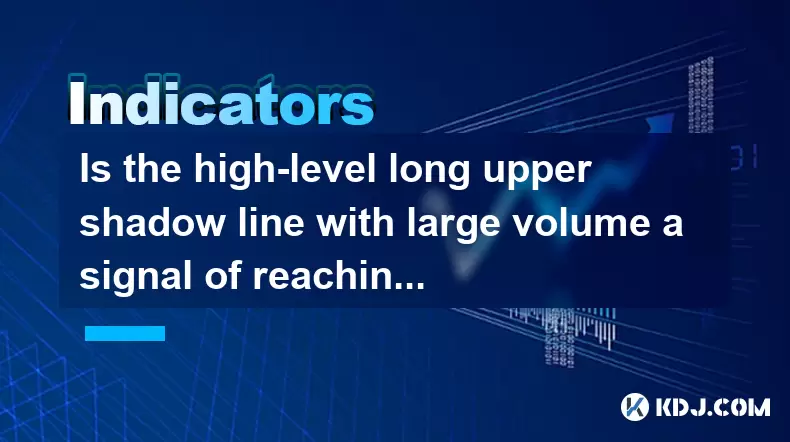
Is the high-level long upper shadow line with large volume a signal of reaching the top?
Jun 27,2025 at 04:50am
Understanding the High-Level Long Upper Shadow LineIn technical analysis within the cryptocurrency market, candlestick patterns play a crucial role in predicting price movements. A high-level long upper shadow line, often referred to as a shooting star or inverted hammer, is a specific type of candlestick pattern that appears at the top of an uptrend. T...
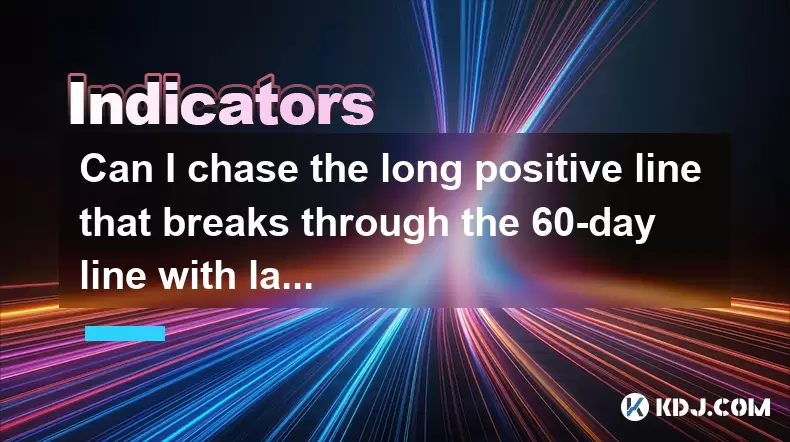
Can I chase the long positive line that breaks through the 60-day line with large volume at the bottom?
Jun 27,2025 at 07:08am
Understanding the 60-Day Line in Cryptocurrency TradingIn cryptocurrency trading, technical analysis plays a pivotal role in identifying potential entry and exit points. One of the commonly used tools is the 60-day moving average, often referred to as the 60-day line. This indicator smooths out price data over the last 60 days and helps traders determin...

The monthly KDJ low-level golden cross is suitable for mid-term position building?
Jun 27,2025 at 03:14am
Understanding the Monthly KDJ IndicatorThe KDJ indicator, also known as the stochastic oscillator, is a momentum tool widely used in technical analysis within the cryptocurrency market. It consists of three lines: the K line, the D line, and the J line. These lines help traders identify overbought or oversold conditions, potential trend reversals, and e...

Is it necessary to stop loss when the high-level long upper shadow line opens low the next day?
Jun 27,2025 at 08:22am
Understanding the High-Level Long Upper Shadow LineIn technical analysis, a long upper shadow line refers to a candlestick pattern where the price moves significantly higher during the session but closes much lower, forming a long wick on the top. When this occurs at a high level, it suggests strong resistance and potential reversal. This type of candle...

How sustainable is the rebound of the lower track of the Bollinger band?
Jun 27,2025 at 10:01am
Understanding the Bollinger Band and Its Lower TrackThe Bollinger Band is a widely used technical analysis tool in cryptocurrency trading, composed of a moving average (usually 20 periods) and two standard deviation lines plotted above and below it. The lower track, or lower Bollinger Band, represents a level that is typically two standard deviations be...

Is it time to leave the market after breaking through the 60-day line and rebounding?
Jun 27,2025 at 06:29am
Understanding the 60-Day Moving Average in CryptocurrencyIn cryptocurrency trading, technical indicators play a pivotal role in decision-making. Among these, the 60-day moving average is widely used by both novice and experienced traders. This indicator calculates the average price of an asset over the last 60 days and helps identify long-term trends. W...

Is the high-level long upper shadow line with large volume a signal of reaching the top?
Jun 27,2025 at 04:50am
Understanding the High-Level Long Upper Shadow LineIn technical analysis within the cryptocurrency market, candlestick patterns play a crucial role in predicting price movements. A high-level long upper shadow line, often referred to as a shooting star or inverted hammer, is a specific type of candlestick pattern that appears at the top of an uptrend. T...

Can I chase the long positive line that breaks through the 60-day line with large volume at the bottom?
Jun 27,2025 at 07:08am
Understanding the 60-Day Line in Cryptocurrency TradingIn cryptocurrency trading, technical analysis plays a pivotal role in identifying potential entry and exit points. One of the commonly used tools is the 60-day moving average, often referred to as the 60-day line. This indicator smooths out price data over the last 60 days and helps traders determin...
See all articles
























































































